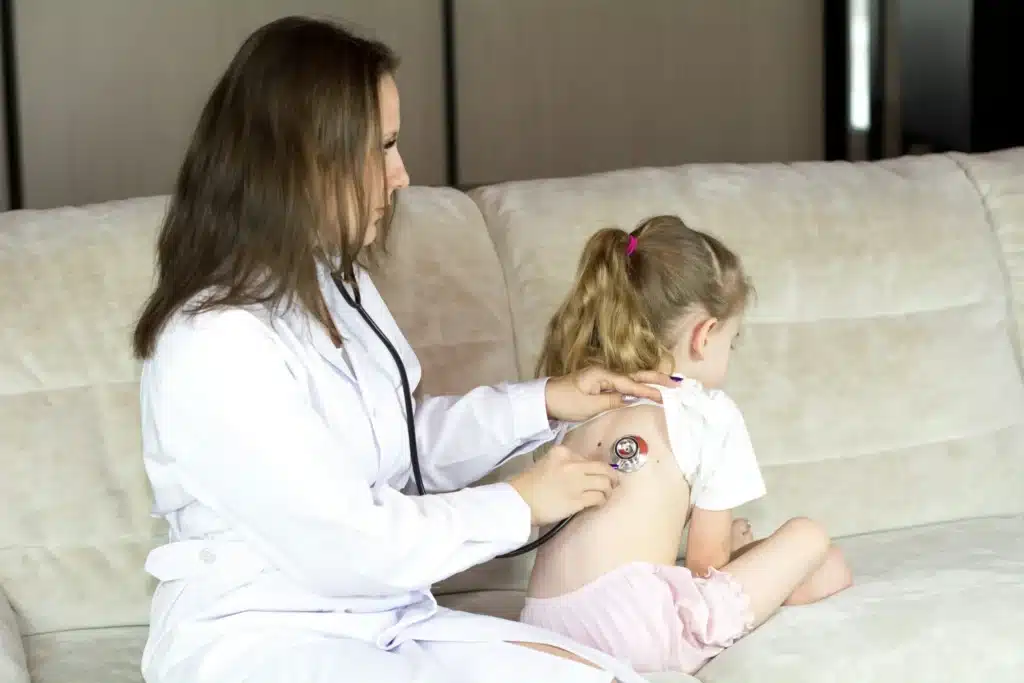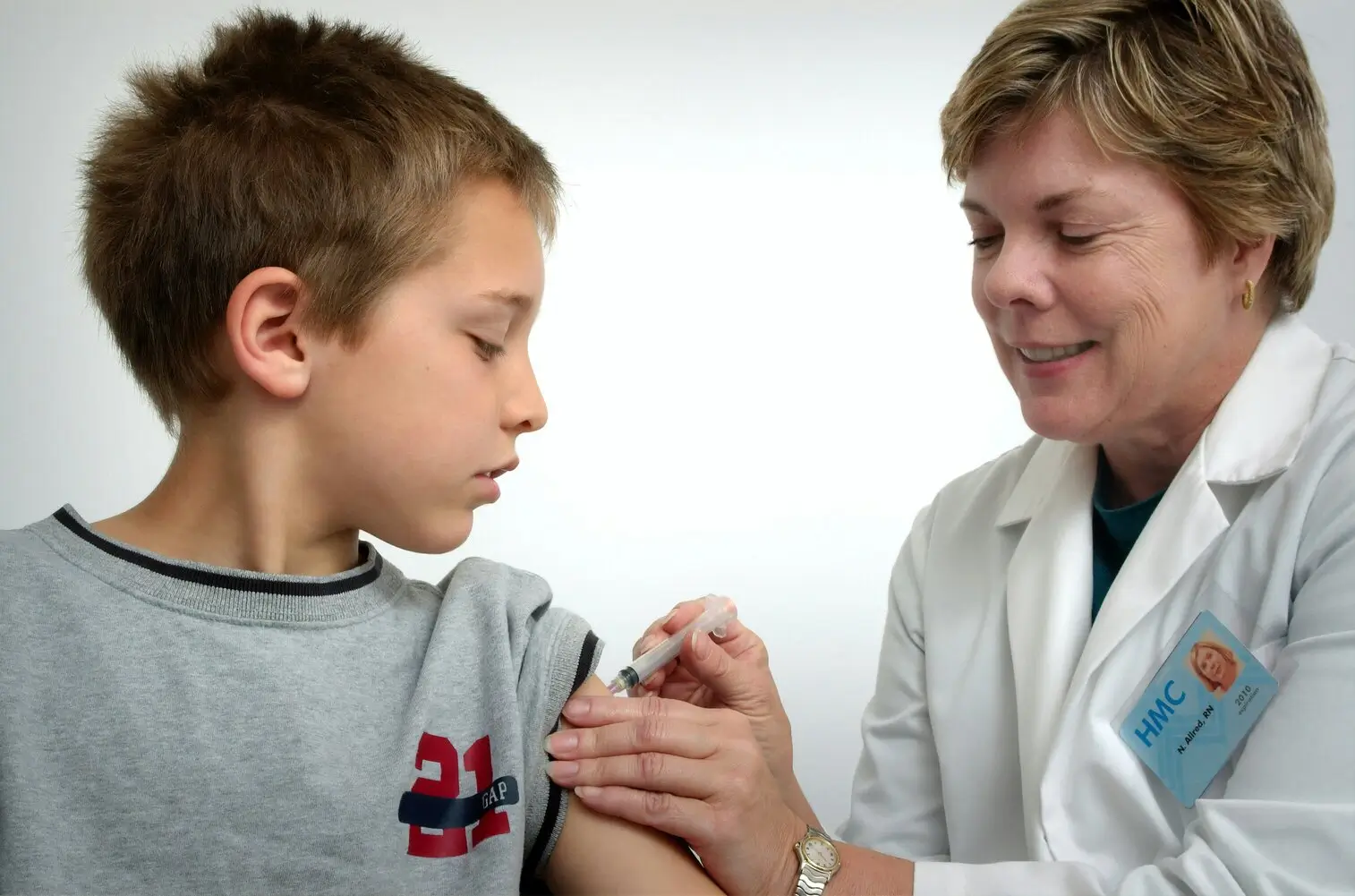vaccine side effects are usually mild, short-lived, and a normal sign that the immune system has noticed the vaccine. Most people feel fine within a day or two. Some have a sore arm. Others run a slight vaccine fever. A few have small injection reactions like redness or swelling. The aim here is simple: outline common reactions, point out the uncommon ones, and show how to care for children after pediatric vaccines. Clinics also watch on site for rare vaccine allergies and keep families for a brief observation period. That extra time is part of vaccine safety practice and helps everyone leave with confidence.
Common reactions after immunization
vaccine side effects typically start within a day or two. Local soreness is common, along with small injection reactions such as warmth or redness near the needle site. Some children feel sleepy or fussy, and a slight vaccine fever may appear in the evening. These mild vs severe vaccine reactions fall on the mild end and usually pass quickly. A cool compress eases discomfort; fluids support recovery. Light activity is fine if comfort allows.
Infant vaccine — what the first 24 hours look like
After an infant vaccine visit, the first day often brings the most change. Short naps and extra cuddles help babies reset. Pain relief belongs only under clinician guidance with careful attention to label directions. If well otherwise, these child vaccine side effects reflect a brief response to the dose; the active components clear within hours to days while protection remains.
Flu shot side effects — school-age expectations
Vaccine side effects mirror other routine doses: a sore arm, mild fatigue, and occasional low-grade fever. Most school-age children return to usual routines the next day. If the arm feels tight, gentle range-of-motion restores comfort. On sports days, a lighter session can feel better while vaccine side effects settle.
Less common or more significant reactions
Some vaccine side effects are less common yet manageable at home. A larger local swelling can appear a day or two later; it may feel warm and firm. Mark the edge lightly with a pen to track change over several hours. If it grows quickly, becomes very painful, or the child looks unwell, contact a clinician.
Vaccine allergies and anaphylaxis
True vaccine allergies are rare; the serious form, anaphylaxis, is even rarer. Clinics observe for about 15–20 minutes after shots to act fast if needed. Red flags include breathing difficulty, widespread hives, swelling of the face or tongue, or sudden dizziness. Seek emergency care if any of these appear.
High fever vaccine guidance
A high fever vaccine response needs context. Fever can be part of the immune response, but a persistent high temperature, fever with a non-blanching rash, unusual sleepiness, or a child who seems very ill are reasons to seek help now. When uncertain, contact local health advice or the child’s doctor. Well-designed childhood vaccine safety systems provide timely next steps.
Infant and child vaccine reactions

Infant vaccine
- Typical reactions: slight vaccine fever, extra sleep, brief crankiness after baby shots.
- Comfort care: offer feeds more often; keep clothing light; use a cool compress on the thigh.
- Timeline: most immunization reactions are mild and fade within 24–48 hours.
- When to check in: if swelling spreads quickly, the baby seems unwell, or fever stays high, contact a clinician.
Child vaccines
- Common effects: sore arm for a day after child vaccines, especially with tetanus-containing doses.
- What helps: hydration and gentle movement to relax the muscle; light activity until tenderness settles.
- Adverse effects vaccines duration: most fade without treatment; monitor comfort for 1–2 days.
- Call the practice if: symptoms grow instead of easing, or new issues appear several days later, staff can confirm what’s expected for that specific dose and advise next steps.
- Extra support: public information lines and national schedules outline expected vaccine side effects and timing.
Comfort and cooling: Use a cool pack wrapped in a cloth on the site. Avoid rubbing the area. Offer water or usual fluids often. For breastfed infants, short, frequent feeds work well.
Rest and routine: Keep the day easy. Gentle play is fine. Extra rest is common and acceptable.
Fever care: Light clothing, calm surroundings, and lukewarm baths may help if the child enjoys them. Use fever reducers only as guided by a clinician.
Watch the site: Some redness is typical. If swelling expands rapidly, becomes very painful, or the child looks unwell, contact care promptly.
These steps match standard advice for vaccine reactions and line up with established vaccine safety practice.
When to contact a doctor
Seek help concerning vaccine side effects. Urgent care is appropriate for any of the following:
- Trouble breathing or wheezing.
- Swelling of lips, face, or tongue.
- Widespread, itchy welts.
- A very high or persistent vaccine fever.
- A child who is unusually drowsy, floppy, or not drinking.
Vaccination sites monitor right after shots, and families should reach out if red flags appear later. Timely contact means quicker answers and a smoother recovery.
Reporting vaccine reactions and understanding vaccine safety
Reporting supports safer programs. If immunization reactions seem unusual or strong, local systems accept reports from both the public and health professionals. These reports feed ongoing vaccine safety monitoring and help refine guidance pages over time. Health services summaries common and rare outcomes clearly and update information when new data arrives.
Why vaccines are considered safe
Vaccines are tested for quality, safety, and effectiveness before approval. Monitoring continues after rollout. While vaccine side effects can happen, most are mild and short-lived. The risk of severe illness drops sharply when pediatric vaccines are given on time. This balance of brief discomfort versus strong protection explains why schedules remain a central public-health tool.
Flu shot side effects and seasonal notes
Flu shot side effects look familiar: sore arm, short-lived tiredness, and sometimes a low fever. These pass within a day or two. For children with asthma or other conditions, seasonal flu vaccines add an extra layer of protection. If the arm is very tender, gentle movement and a cool compress may help. A simple plan for the first evening fluids, light dinner, and early bedtime keeps things comfortable.
- Vaccine side effects by timeline First 0–2 hours: Many children feel normal. A faint sting at the site may be noticed, then forgotten during play.
First evening: Mild injection reactions such as soreness or warmth are common. A small number develop a slight vaccine fever and prefer a quiet night.
Day 1–2: Most vaccine side effects appear and resolve in this window. Local redness may peak and then fade. Energy usually returns to baseline.
Day 3–5: Less common to feel effects now, but a larger local area can appear with some doses. Monitor comfort and size.
Beyond Day 5: Ongoing pain, spreading redness, or significant fever deserves a call to a clinician. This simple timeline helps families plan around child vaccines and keeps expectations realistic during busier weeks. - Vaccine side effects vs common illness: Sometimes a cold or tummy bug arrives the same week as pediatric vaccines. Clues that point to routine illness rather than vaccine side effects include cough and runny nose starting before the appointment, known exposure to a sick classmate, or symptoms that begin well outside the usual post-shot window. When in doubt, a quick call to a clinic clarifies care and reduces worry.
- Mild vs severe vaccine reactions: making sense of terms: “Mild” covers local soreness, small areas of redness, and short fevers that respond to simple care. “Severe” refers to symptoms that threaten breathing, circulation, or overall function. Between those two sits the “moderate” group, bigger local swelling, high fevers that respond to guidance, or prolonged fussiness that slowly improves. Knowing these categories helps describe vaccine reactions clearly when speaking with a clinician.
- Vaccine side effects in special situations Pre-existing allergies: Families with food or environmental allergies often ask about vaccine allergies. A past mild allergy does not automatically predict a severe reaction to vaccines. Discuss known allergies with the vaccinator so the right products and observation plans are used.
- Recent illness or antibiotics: A mild cold without fever is rarely a reason to delay most child vaccines. For moderate illness or high fever, clinicians may suggest rescheduling. Antibiotics for a mild ear infection or similar issue usually do not interfere with routine doses.
- Premature infants: Infant vaccine schedules still apply, adjusted for medical history as needed. Monitoring and comfort care follow the same steps.

Practical comfort strategies after pediatric vaccines
- Keep clothing soft and loose around the site.
- Try a brief, lukewarm bath if the child enjoys it.
- Use distraction: books, songs, or quiet play.
- Maintain hydration; small, frequent sips are easier during a mild vaccine fever.
- Reserve pain or fever medicine for cases where a clinician has recommended dosing.
These everyday tools shorten the course of most vaccine side effects and restore normal routines quickly.
When to return to school, daycare, or sports
Most vaccine side effects are mild and short. Many children can return the same day after pediatric vaccines if comfort is good and energy is normal. A sore arm or leg from injection reactions is common. Light activity for 24 hours helps the muscle relax. If tenderness follows flu shot side effects, a reduced practice or a walk in place of full drills keeps movement gentle while recovery continues.
Return-to-routine decisions work best with simple checks. Temperature should be normal or close to normal. Mild vaccine fever that fades with rest and fluids is expected. Eating and drinking should look typical for that child. Mood should be steady enough for group settings. For child vaccines given in the thigh, loose clothing prevents rubbing. For arm doses, easy range-of-motion lowers stiffness before class or training.
Hold off on school, daycare, or sports if any child vaccine side effects feel stronger over time rather than easing. Stay home if fever climbs, comfort is poor, or energy drops sharply. A high fever vaccine response, repeated vomiting, spreading redness at the site, or a child who seems unwell needs a check-in with a clinician. These signs move from “mild” to the more serious end of mild vs severe vaccine reactions and deserve guidance.
Allergic symptoms are uncommon, but any sign that points to possible vaccine side effects allergies trouble breathing, widespread hives, swelling of lips or tongue requires urgent care rather than a return to activities. For infants after baby shots, the same approach applies: normal feeds, calm behavior, and comfortable movement signal readiness; otherwise, rest at home and seek guidance.
FQAs
Do infant vaccine doses cause sleep changes the same night?
Ans: Sometimes. Shorter naps or extra sleep can follow immunization reactions and usually settle by morning.
Can multiple shots in one visit increase vaccine side effects?
Ans: Local soreness may add up, but overall vaccine safety remains strong with same-day schedules.
Are flu shot side effects different from other child vaccines?
Ans: Mostly similar arm soreness and mild vaccine fever and they fade within 24–48 hours.
Do family allergies predict vaccine allergies?
Ans: Not directly. True vaccine allergies are rare; clinics observe briefly after dosing for safety.
Should the injection site be massaged after immunization reactions start?
Ans: No. Use a cool compress and gentle movement, avoid firm massage.




